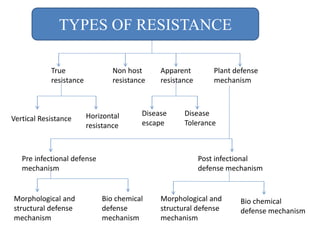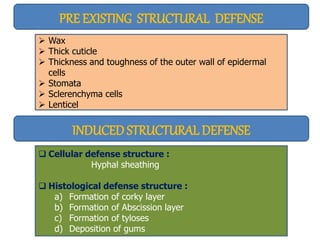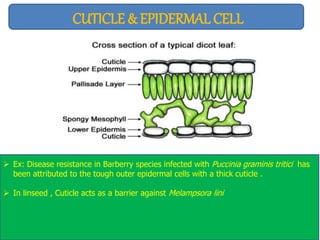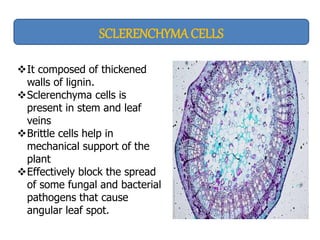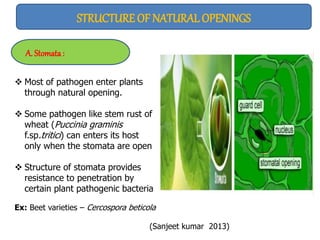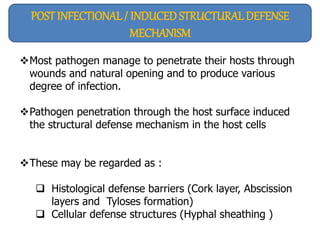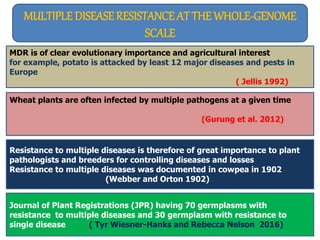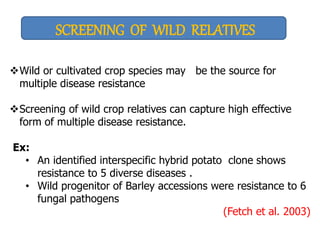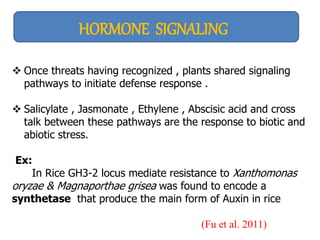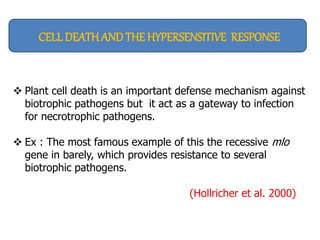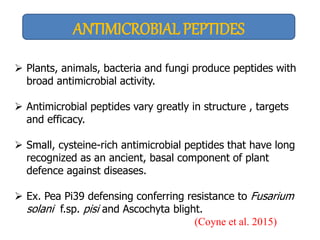The document explores multiple disease resistance (MDR) in plants, detailing various forms of plant disease resistance mechanisms, such as structural and biochemical defenses. It discusses the significance of MDR for crop improvement, highlighting the importance of germplasm screening and quantitative trait locus (QTL) mapping in breeding resistant varieties. The text emphasizes that plants can exhibit resistance to two or more diseases, underlining the evolutionary and agricultural relevance of MDR in combating plant pathogens.







